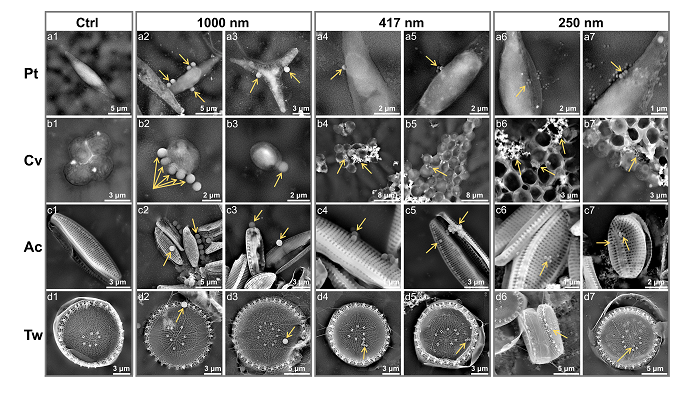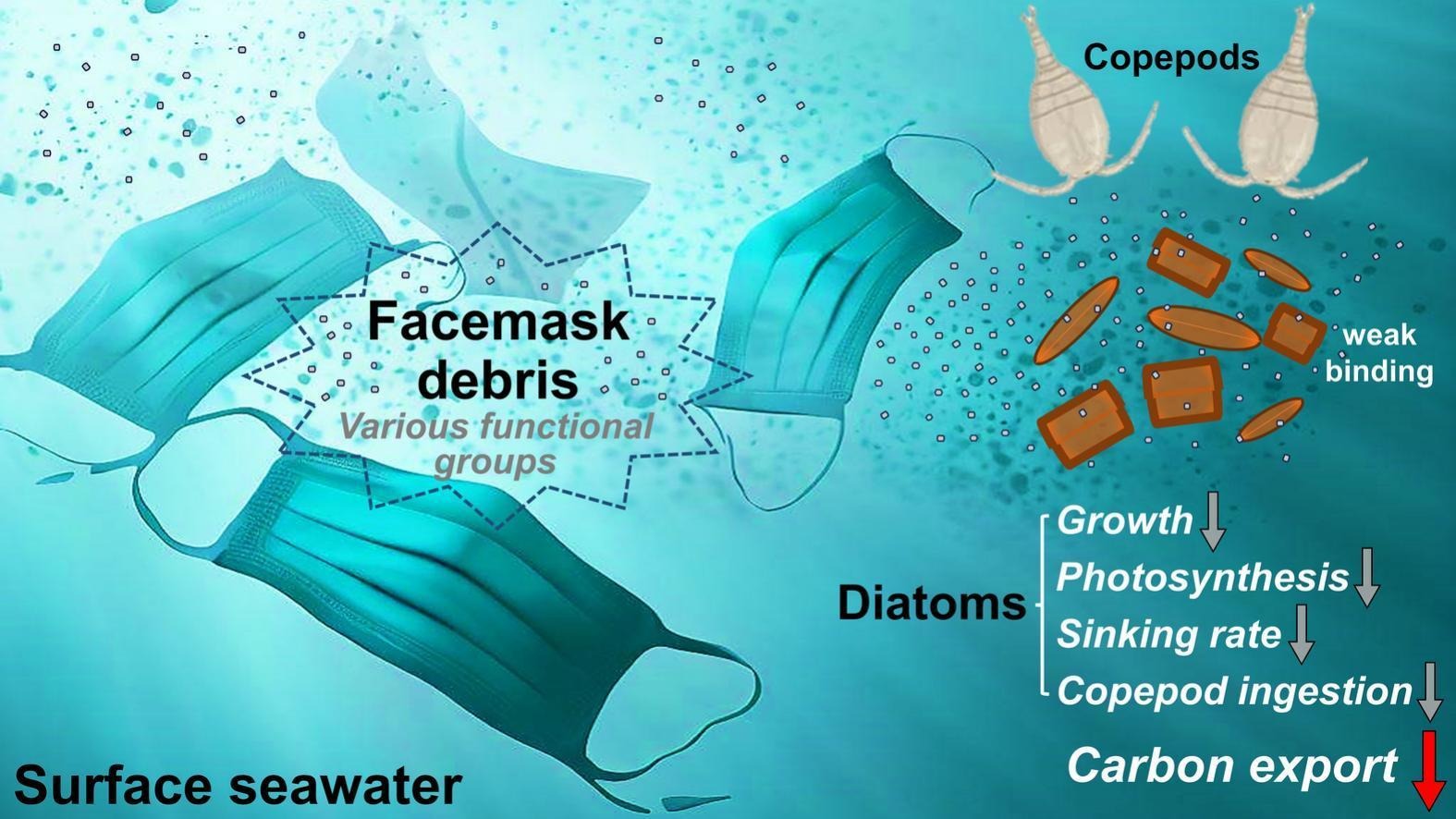Recently, Prof. Pan Ke's group at the Institute for Advanced Study of Shenzhen University has achieved multiple research results on the physiological response of marine microalgae to emerging environmental pollutants, and has published three research papers in well-known journals in the field of environmental science.
On February 7, 2024,Prof. Pan's groupreported on the species-specific interactions between marine microalgae and microplastics, as well as the corresponding cell wall deformation mechanism. The related results were published inEnvironmental Chemistry Letters(IF:15.7) under the title “Species-specific deformation of microalgae in the presence of microplastics”. The first author of this paper is Chen Fengyuan, a joint PhD student from Shenzhen University and Hong Kong University of Science and Technology. The corresponding author is Prof. Pan Ke, with Shenzhen University as the first completion unit.
Ocean pollution by microplastics represents a threat to phytoplankton health, yet there is few knowledge on physical interactions between microplastics and microalgal cell surfaces. We studied the contact between environmentally aged microplastics and four microalgal species by atomic force microscopy. After seven days, microalgae showed malformations at specific sites, and these malformations varied with species. Depending on whether the cell had a porous or a smooth surface, microplastics adsorbed to the cell surface via embedding or denting, leading to minor defects or noticeable wrinkles in cell walls. Results also showed that microplastics penetrate into microalgae. Such cellular engulfment of microplastics was less present in typical diatoms because diatoms bear a porous frustule capable of trapping tiny particles. Moreover, we observed a novel type of deformation, bowl-shaped depressions, only in non-porous microalgae. The geometric features of malformations are correlated with the shape and size of microplastics. Our findings reveal for the first time the species-specific deformation in microalgae due to microplastic exposure.
The link to this publication: http://dx.doi.org/10.1007/s10311-024-01699-2

On January 17, 2024,Prof. Pan's groupanalyzed the combined effect of salinity and silicon concentration on metal adsorption in a common diatom. The related results were published inJournal of Environmental Sciences(IF:6.9) under the title “Synergistic effect of silicon availability and salinity on metal adsorption in a common estuarine diatom”. The first author of this paper is Chen Fengyuan, a joint PhD student from Shenzhen University and Hong Kong University of Science and Technology. The corresponding author is Prof. Pan Ke, with Shenzhen University as the first completion unit.
Increasing nitrogen and phosphorus discharge and decreasing sediment input have made silicon (Si) a limiting element for diatoms in estuaries. Disturbances in nutrient structure and salinity fluctuation can greatly affect metal uptake by estuarine diatoms. However, the combined effects of Si and salinity on metal accumulation in these diatoms have not been evaluated. In this study, we aimed to investigate how salinity and Si availability combine to influence the adsorption of metals by a widely distributed diatomPhaeodactylum tricornutum. Our data indicate that replete Si and low salinity in seawater can enhance cadmium and copper adsorption onto the diatom surface. At the single-cell level, surface potential was a dominant factor determining metal adsorption, while surface roughness also contributed to the higher metal loading capacity at lower salinities. Using a combination of non-invasive micro-test technology, atomic force microscopy, X-ray photoelectron spectroscopy, and Fourier transform infrared spectroscopy, we demonstrate that the diversity and abundance of the functional groups embedded in diatom cell walls vary with salinity and Si supply. This results in a change in the cell surface potential and transient metal influx. Our study provides novel mechanisms to explain the highly variable metal adsorption capacity of a model estuarine diatom.
The link to this publication:https://doi.org/10.1016/j.jes.2024.01.012

On December 20, 2023, Prof. Pan's group revealed the impact of discarded mask fragments in the ocean on the surface properties and physiological behavior of two typical diatoms. The related results were published inScience of The Total Environment(IF:9.8) under the title “Impact of facemask debris on marine diatoms: Physiology, surface properties, sinking rate, and copepod ingestion”.The first author of this paper is Chen Fengyuan, a joint PhD student from Shenzhen University and Hong Kong University of Science and Technology. The corresponding author is Prof. Pan Ke and Dr. Ma Jie, with Shenzhen University as the first completion unit.
Discarded surgical masks have become a new source of plastic waste in seawater capable of releasing numerous micro and nano plastic fragments. However, little information is available about how this waste impacts the ecological state of marine phytoplankton. Here, we exposed two model marine diatoms (Phaeodactylum tricornutumandThalassiosira weissflogii) to mask-released debris (MD) that is characterized by various differently-charged functional groups. Although MD could only bind loosely to diatoms, it still inhibited their growth and significantly altered cell surface physicochemical properties. At the nanoscale, MD-exposed cell walls showed enhanced roughness and modulus, besides declined electrical potential, adhesion, and proportion of oxygen-containing compounds. As a result, diatom ingestion by copepods was reduced, and the sinking rate of the carbon pool consisting of MD plus diatoms decreased as well. Our study indicated that MD effects on diatoms have the potential to slow down carbon export from surface seawater to the deep sea. Since oxidation and generation of functional groups are common during the aging process of microplastics (MPs) in nature, the interactions between the diatom cell surface and MD have important environmental significance.
The link to this publication: https://doi.org/10.1016/j.scitotenv.2023.167222

The above work was funded by the National Natural Science Foundation of China, Hong Kong Research Grants Council, and Shenzhen Science and Technology Innovation Committee.



